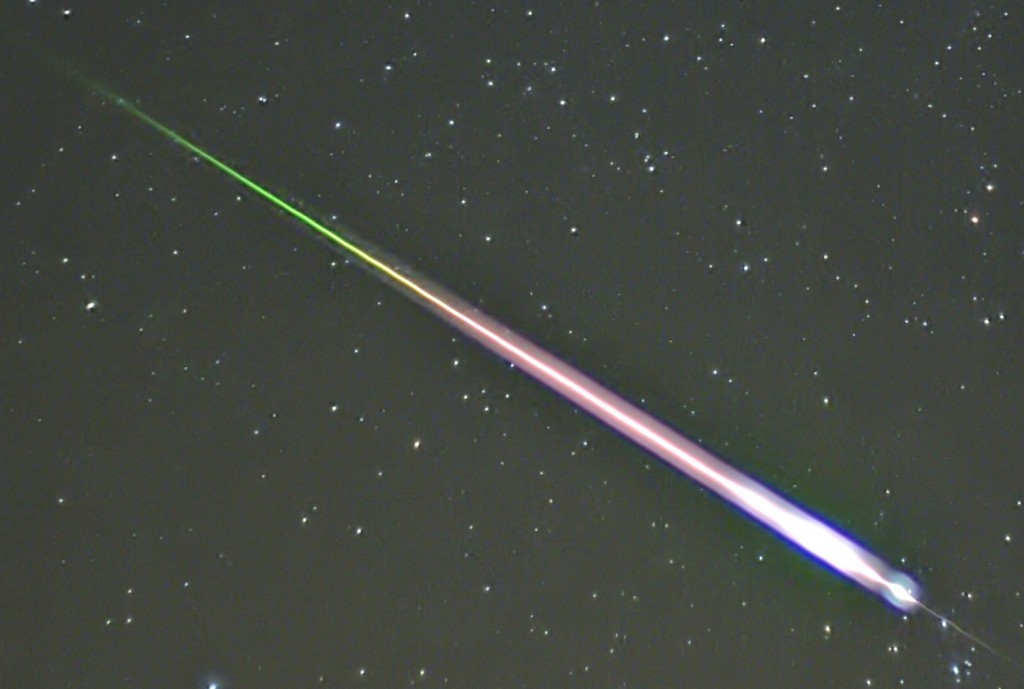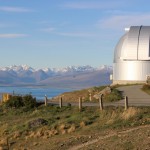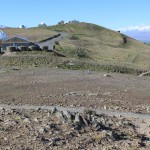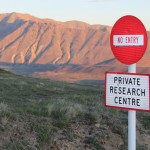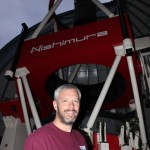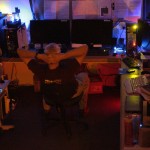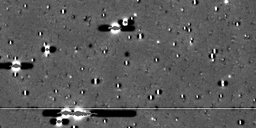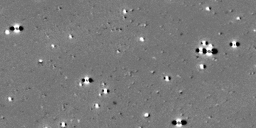The Mount John University Observatory celebrates its 50th anniversary this year. To mark the occasion, a symposium was held 6 – 8 May, at Tekapo, at the foot of the mountain.
Many speakers — myself included — gave talks about the part MJUO played in their lives. I spent six months of 1999 observing for the Microlensing Observations in Astrophysics (MOA) collaboration. It was an experience that I’ll never forget. One of the other speakers commented that visiting Tekapo was good for the soul. I couldn’t agree more. The place is spectacular.
John Hearnshaw, past director of the MJUO and former head of the Department of Physics and Astronomy at the University of Canterbury, was the driver behind the symposium. When he kindly accepted my offer of a talk, he told me to spend more time on reminiscences than science. It was that kind of conference.
I met Audrey Walsh, the daughter of Frank Bateson, the astronomer charged with deciding where to place an observatory for the University of Canterbury.
Bateson was instrumental in the founding of the Mount John University Observatory near Lake Tekapo, assisting the University of Canterbury in finding an appropriate location for the observatory.[3] Bateson was appointed astronomer-in-charge of the observatory after it opened in 1963; he held this position until his retirement in 1969. –– Wikipedia entry
Audrey recalled that her father was a man of focus and drive — and was never seen in public not wearing a suit.
Gerry Gilmore, New Zealand astronomer, cosmologist and professor at the Institute of Astronomy in Cambridge, is also the UK lead for ESA’s space satellite GAIA. I had the pleasure of introducing Gerry at a talk he gave to the Auckland Astronomical Society last week. More on GAIA in a later post. Gerry spoke at the symposium about his time on Mount John and his thoughts for the Observatory’s future. To those of us concerned with engaging politicians on the topic of supporting New Zealand astronomy, the need or otherwise of a National Observatory, or indeed the potential loss of capacity in instrumentation and observation skills, Gerry notes that we need to learn how to speak the language of the politicians.
On the general topic of Wither Mount John, I chatted with Karen Pollard, the present Directory of the Observatory. I also spoke with Graeme Murray, general manager of Earth & Sky — the operation that conducts public tours up the mountain.

Participants at the 50th Anniversary of the Mount John University Observatory. The altitude positions appear to be sinusoidal. Source: http://www.phys.canterbury.ac.nz/newsletter/2015/2015-05-15.pdf
It was also great to see Duncan Hall. Duncan inhabited an office across the corridor from mine during my time at Manchester University. His was the fearsome job of figuring out how to set up the Square Kilometer Array project. At the symposium, Duncan spoke of his past work in instrumentation for Mount John.
The first session of the final day was MOA-centric. Phil Yock spoke of the origin of the MOA collaboration, followed by Yasushi Muraki, who recounted the construction of the 1.8m telescope. I followed up with a few memories about my time up on the mountain. Fumio Abe brought the science of planetary microlensing to the fore, describing the background and our recent results.
There were many other talks, all engaging and interesting — too many to summarise here. The last activity of the symposium was a trip up the mountain. This was the first time in 16 years that I was there. I had expected changes, and there were plenty. Not so many however, that I felt the place unfamiliar. It reminded me instantly that this was a home I inhabited for a short, but forever memorable time.
-
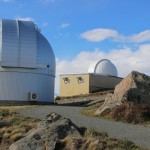
-
The 1.8 metre MOA-II telescope (left) and the 61cm Boller & Chivens telescope (right). I spent my six months observing for MOA using the B&C.
-

-
Me and the 1.8m MOA-II telescope. We use this to find planets!
-
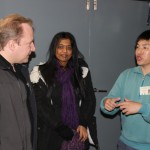
-
PhD students Ashna Sharan (centre) and Alex Li (right) talking to Mike Reid, who did his PhD with Denis Sullivan (Victoria) and MOA,
-
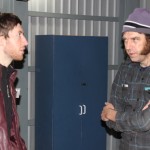
-
MSc student Martin Donachie (left) and MOA observer Paul Tristram chatting.
-
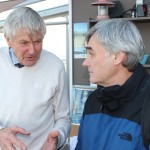
-
Graeme Murray (Earth & Sky) chatting with Gerry Gilmore.
-
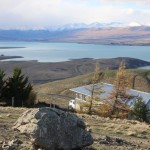
-
That view…
-
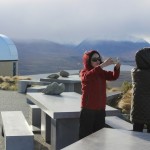
-
Touristy picture of tourists taking pictures.
-
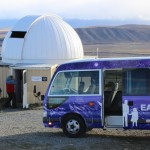
-
The astrograph building and an Earth & Sky bus.
-

-
Gerry Gilmore and me, in the refurbished astrograph building.
-
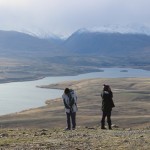
-
Windy, it was, that day up the mountain.
-

-
Phil Yock, in front of the B&C telescope. Phil was my PhD and MSc supervisor!
-
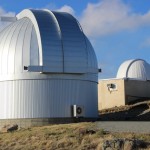
-
Another view of the 1.8m and the 0.61m B&C.
-
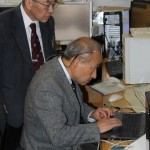
-
Muraki-san and Abe-san, at work in the control room of the MOA-II telescope.
-
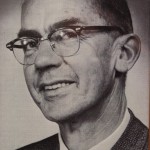
-
Frank M. Bateson. Founder of the Mount John University Observatory
-
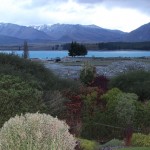
-
The view from my hotel room, May 2015. That construction site is the location of Earth & Sky’s new building.



